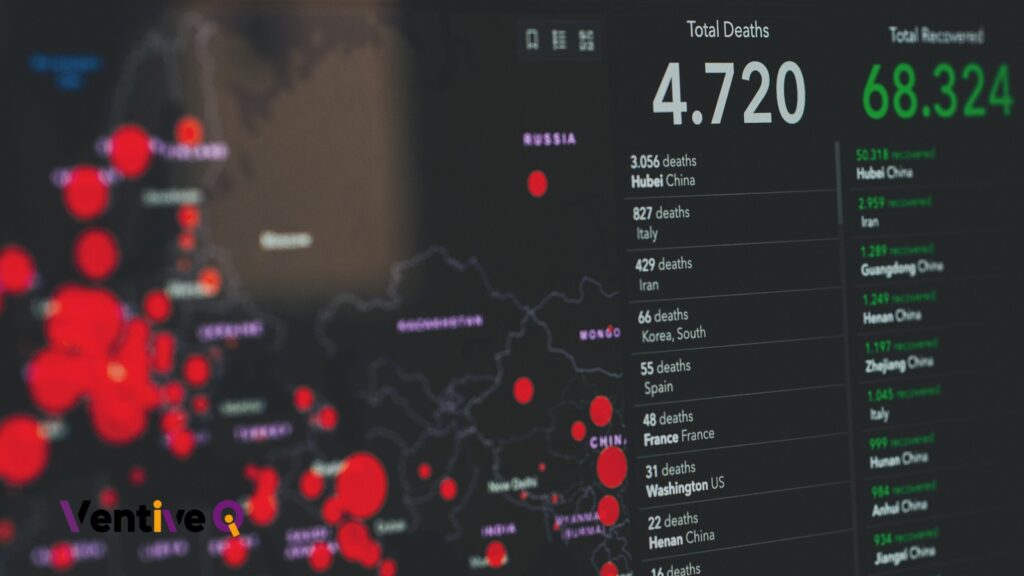Data collection is essential for any business to understand its audience, tailor marketing campaigns, and improve products or services. However, many businesses struggle with how to collect customer data without compromising their privacy or causing annoyance. In this blog, VentiveIQ will explore some compelling methods for collecting customer data in a way that profits both the business and the customer.
Learn more about Data cleansing importance and audience segmentation.

8 Best ways to collect customer data
Collecting customer data is essential for any business to understand their customers, improve their products and services, and tailor their marketing efforts. Here are eight of the best ways to collect customer data:
1. Online Forms
- One of the most effective ways to collect customer data is via online forms. This can be done through surveys, contact forms, registration forms, or any other type of form that needs customers to input their information.
- The key to making online forms successful is to make them straightforward. Customers are more likely to fill out a form if it’s easy to do so and they don’t have to spend too much time filling it out.
Read more: How data cleansing can help you identify and reach your customer.
2. Social Media
- Social media platforms are great tools for collecting customer data. By asking followers to fill out a survey or poll, businesses can gain valuable insights into their audience.
- Additionally, businesses can also gather data through social media analytics, which can help track engagement and audience demographics.
3. Loyalty Programmes
- Loyalty programs are another effective way to collect customer data. By offering incentives for customers to sign up, businesses can gather data on their customers’ purchasing habits, preferences, and contact information.
- This information can then be used to create targeted marketing campaigns and improve customer experience.
4. Point of Sale
- Point of sale systems are a great way to collect customer data at the time of purchase. By asking customers for their contact information or offering discounts for providing it, businesses can build their customer database and use the information to create personalized marketing campaigns.

5. Customer Feedback
- Customer feedback is an excellent way to collect data on customer satisfaction and preferences. This can be done through surveys or feedback forms, which can be sent out via email or posted on the business’s website.
- By asking for feedback, businesses can gain insights into what customers like and dislike about their products or services and make improvements accordingly.
6. Website Analytics
- Website analytics provide businesses with valuable data on their website visitors, including demographics, behavior, and preferences.
- By tracking this data, businesses can improve their website’s user experience and tailor marketing campaigns to their audience.
7. Mobile Apps
- Mobile apps provide businesses with a unique opportunity to collect customer data. By asking customers to sign in or create an account, businesses can gather information on their preferences, purchasing habits, and location.
- Additionally, businesses can use mobile apps to send push notifications and gather feedback on their products or services.
8. Customer Service
- Customer service interactions provide businesses with an opportunity to collect customer data. By asking customers for their contact information or preferences, businesses can gather valuable insights into their audience and personalize future interactions.
7 Best Practices for Gathering the Insights You Need
Gathering insights is a critical part of any business plan. Whether you are launching a new product, expanding into a new market, or looking to improve customer experience, gathering the right insights can help you make informed decisions and achieve your goals.

1. Clearly Define Your Objectives
Before you start gathering insights, it’s essential to clearly define your objectives. What do you want to achieve? What questions do you need to answer? By defining your objectives, you can ensure that your insights-gathering process is focused and efficient.
2. Choose the Right Methodology
There are many different methodologies for gathering insights, including surveys, focus groups, interviews, and observation. Each methodology has its strengths and weaknesses, and the right one for you will depend on your objectives, audience, and resources. Make sure to research and choose the methodology that is most appropriate for your needs.
3. Identify Your Target Audience
Your target audience is the group of people you want to gather insights. This could be your customers, potential customers, industry experts, or other stakeholders. It’s important to identify your target audience early in the process, as this will help you tailor your insight-gathering methodology and questions.
4. Craft Your Questions Carefully
The questions you ask will determine the quality of insights you receive. Make sure to craft your questions carefully, keeping your objectives and target audience in mind. Avoid leading questions, use open-ended questions to encourage thoughtful responses, and keep your questions focused on one topic at a time.
5. Respect Your Audience’s Time and Privacy
When gathering insights, it’s important to respect your audience’s time and privacy. Make sure to be clear about how much time their participation will take and ensure that their privacy is protected. If you are gathering sensitive information, consider using a third-party service to ensure anonymity.
6. Analyze and Synthesize Your Data
Once you have gathered your insights, it’s important to analyze and synthesize your data. This will help you identify patterns, trends, and insights that can inform your business decisions. Use visual aids such as graphs and charts to help make your data more digestible.
7. Use Your Insights to Drive Action
Finally, make sure to use your insights to drive action. Insights are only valuable if they lead to action that improves your business. Use your insights to inform product development, marketing campaigns, customer service strategies, and other areas of your business.
VentiveIQ gathers valuable insights into your audience’s online activity and behaviors, enabling us to tailor messaging and determine the most effective methods of engagement. This process relies heavily on data collection, which is a crucial component of our approach.
Conclusion
There are many effective methods for collecting customer data, and the key is to find the right mix of methods that work for your business. By using a combination of online forms, social media, loyalty programs, point of sale, customer feedback, website analytics, mobile apps, and customer service interactions, businesses can gather valuable insights into their audience and improve their products, services, and marketing campaigns. Gathering insights is a critical part of any business strategy, and following these best practices can help ensure that your insights-gathering process is effective and efficient. Remember to always prioritize customer privacy and be transparent about how you are collecting and using their data.

